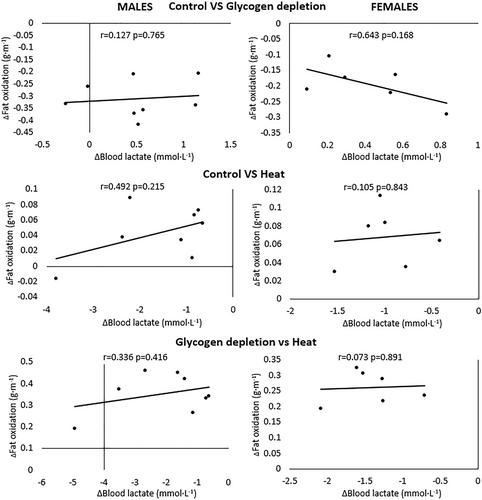Changes in lactate concentration are accompanied by opposite changes in the pattern of fat oxidation: Dose–response relationship
Abstract
It is unknown whether changes in lactate concentration produced by different situations (e.g., glycogen depletion or heat) modify fat oxidation. If confirmed, we could determine a dose–response relationship between lactate and fat. The aim of this study was to determine whether changes in lactate concentration (due to glycogen depletion or heat) alter fat oxidation during exercise. 11 males and eight females performed an incremental exercise test under three situations: control, glycogen depletion, and heat. At rest, in the last minute of each step and immediately post-exhaustion, lactate was analyzed and fat oxidation was estimated by indirect calorimetry. Lactate concentration was inversely associated with fat oxidation in the three aforementioned situations (r > 0.88 and p < 0.05). The highest lactate concentration was found in the heat situation, followed by the control situation, and finally the glycogen depletion situation (all p < 0.05). The opposite was found for fat oxidation, with the highest fat oxidation found in the glycogen depletion situation, followed by the control situation, and finally the heat situation (all p < 0.05). There is no association between the changes in lactate concentration between situations at each intensity and the changes in fat oxidation between situations at each intensity in males or females (p > 0.05). In conclusion, lactatemia is strongly and inversely associated with fat oxidation under the three different situations. Furthermore, the lowest lactate concentrations were accompanied by the highest fat oxidations in the glycogen depletion situation, whereas the highest lactate concentrations were accompanied by the lowest fat oxidations in the heat situation.


 求助内容:
求助内容: 应助结果提醒方式:
应助结果提醒方式:


